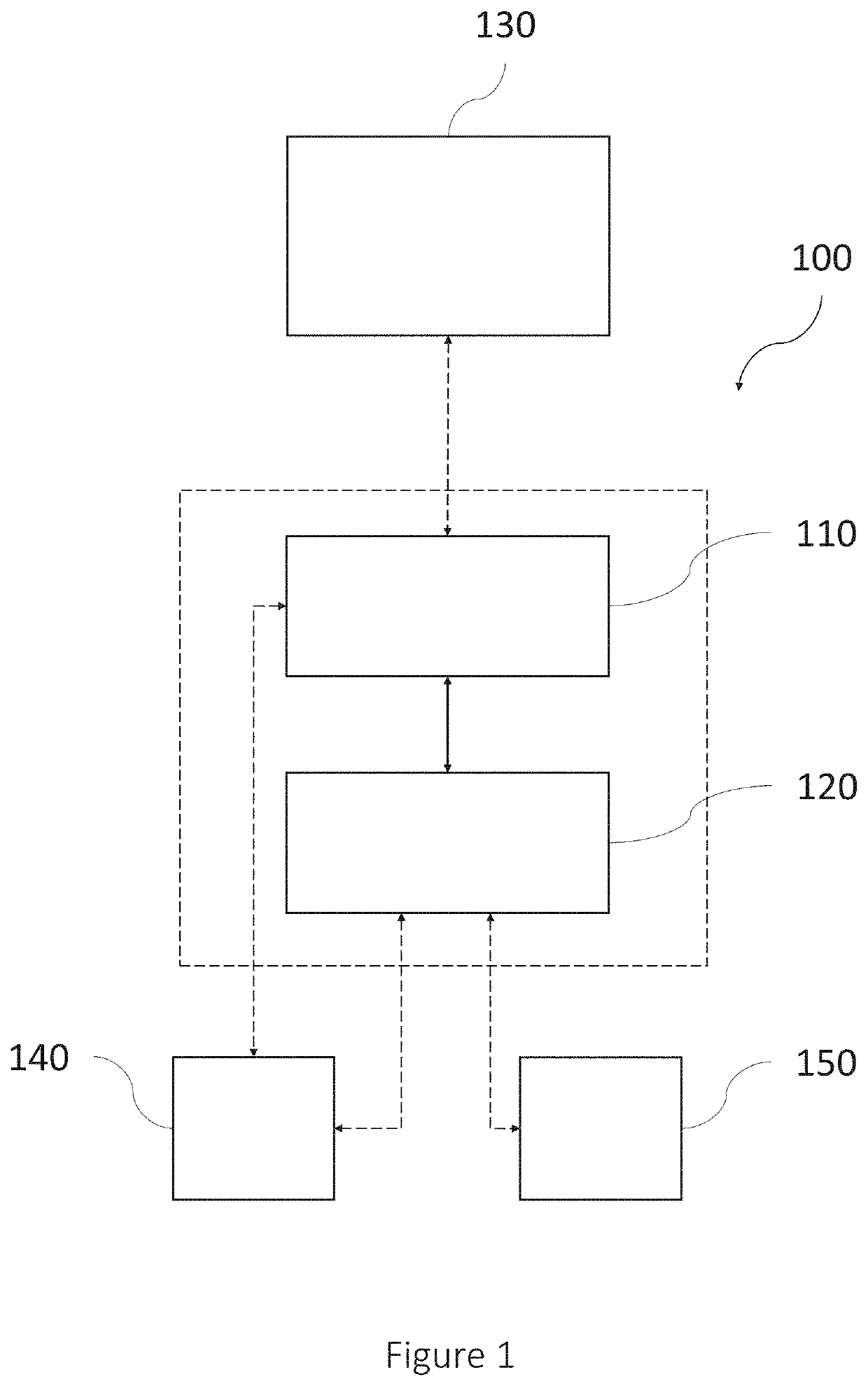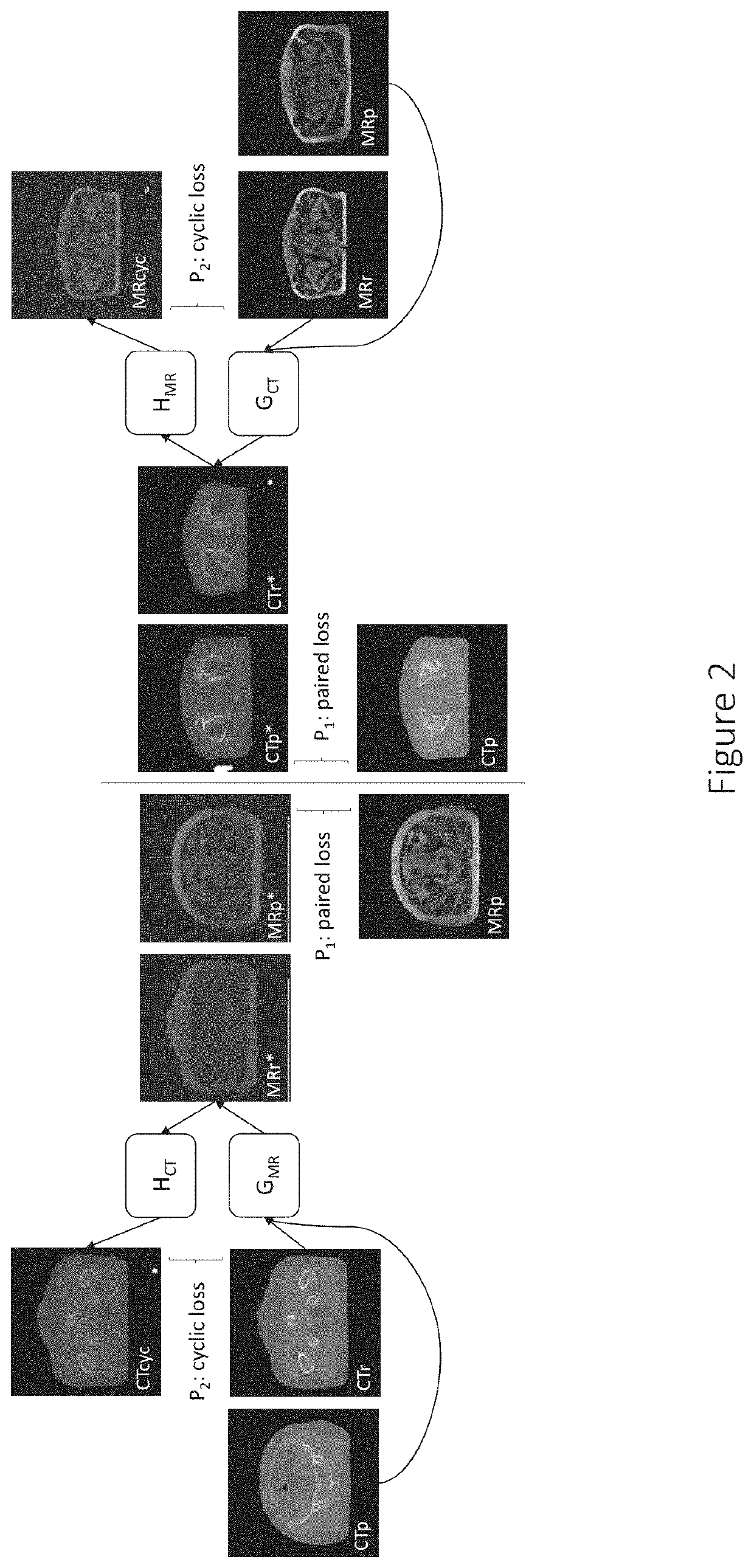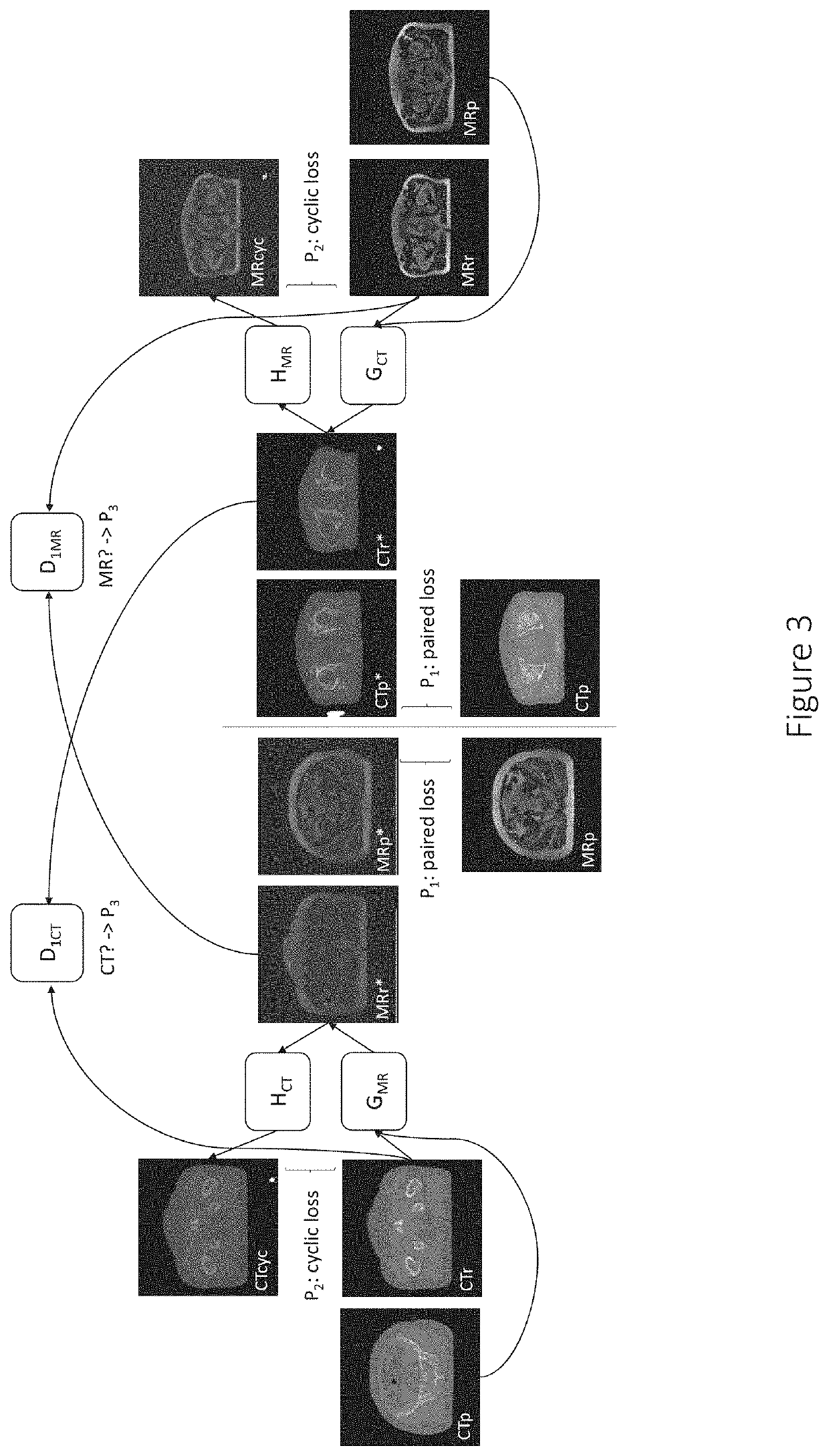Medical image conversion
a technology for medical images and conversion functions, applied in image data processing, medical data mining, radiation therapy, etc., can solve the problems of risk of introducing false information, and less accurate generated conversion functions, so as to minimize the penalty of said first and second penalties and optimize the conversion function accurately.
- Summary
- Abstract
- Description
- Claims
- Application Information
AI Technical Summary
Benefits of technology
Problems solved by technology
Method used
Image
Examples
use case embodiment
[0092]To set the presently disclosed systems and methods in a larger context, the generating of an optimized parametrized conversion function T may in use case embodiments be preceded by the generating of original medical images.
[0093]FIG. 7 is a flow diagram exemplifying such a larger context, including the steps of: obtaining original medical images; obtaining an initial parametrized conversion function; calculating a first penalty P1 based on paired images, by comparing the converted medical image of the second image type with the paired original medical image of the second image type; calculating a second penalty P2 based on comparisons between converted medical images and original medical images, after converting them into images of the same image type; and generating an optimized parametrized conversion function based on the parameters of the initial parametrized conversion function and at least said first and second penalties P1 and P2. FIG. 7 further includes steps of: gener...
PUM
 Login to View More
Login to View More Abstract
Description
Claims
Application Information
 Login to View More
Login to View More - R&D
- Intellectual Property
- Life Sciences
- Materials
- Tech Scout
- Unparalleled Data Quality
- Higher Quality Content
- 60% Fewer Hallucinations
Browse by: Latest US Patents, China's latest patents, Technical Efficacy Thesaurus, Application Domain, Technology Topic, Popular Technical Reports.
© 2025 PatSnap. All rights reserved.Legal|Privacy policy|Modern Slavery Act Transparency Statement|Sitemap|About US| Contact US: help@patsnap.com



